A School Grounds Manager’s Primer
By Vickie Wallace and Alyssa Siegel-Miles, UConn Extension
In 2010, Connecticut state legislation banned the application of all pesticides registered with EPA, and labeled for use on lawn, garden, and ornamental sites, on the grounds of public or private daycares (as defined in CGS Sec. 19a-77) and schools with grades K-8. The text of the law (C.G.S. Sec. 10-231) can be read at cga.ct.gov.
WHICH SCHOOL LOCATIONS ARE AFFECTED BY THIS LAW?
Connecticut state legislation bans the application of all pesticides registered with EPA and labeled for use on lawn, garden, or ornamental sites on the grounds of private and public K-8 grade schools and daycare facilities. The law applies to:
- Turfgrass areas: lawns, athletic fields, and recreational areas;
- Landscaped areas around buildings and anywhere on K-8 school grounds, including trees;
- Playgrounds;
- Fence lines around athletic fields, tennis courts, playgrounds, or school property perimeters;
- Parking lots and sidewalks on school grounds;
- High school property that is shared jointly with a daycare or K-8 school.
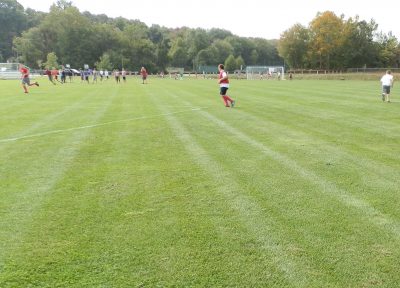
WHICH PESTICIDES ARE BANNED?
The Environmental Protection Agency (EPA), the government body that regulates pesticides in the U.S., defines a pesticide as “any substance or mixture of substances intended for preventing, destroying, repelling or mitigating any pest.” The overarching term “pesticide” includes herbicides, insecticides, fungicides, rodenticides, plant regulators, defoliants and desiccants.
Most pesticides that have an EPA registration number, whether synthetic or organic, cannot be used on daycare/K-8 school properties. Sanitizers, disinfectants, antimicrobial agents, pesticide bait, and aerosol sprays to protect from imminent danger from stinging or biting insects are not prohibited under this law. Legislation passed in 2015 allows some EPA registered pesticide products to be used, including:
- Horticultural oils and soaps that are registered with the EPA.
- Naturally occurring substances that control pests by nontoxic mechanisms (i.e., microbial – a living microorganism is the active ingredient - or biochemical pesticides) that are registered with the EPA. These products are difficult to clarify in these categories. Refer to DEEP or EPA for clarification.
Note: ANY pesticide product applied on school grounds must be applied by a CT licensed pesticide applicator.
ARE THERE PESTICIDE PRODUCTS THAT ARE PERMITTED FOR USE ON K-8 SCHOOL PROPERTIES?
The law allows for the use of pesticide products that are exempt from federal registration, aka “minimum risk” pesticides or “25(b)” products. However, they must be registered in the state of CT. CT DEEP maintains a list of “minimum risk” pesticide products allowed for use at K-8 schools and day care centers, which can be found at elicense.ct.gov/Lookup/GenerateRoster (Scroll to Pesticide Management Program, click on Active Pesticide Products registered as EPA EXEMPT 25(B), then click "continue" and download). Minimum risk products contain active and inert ingredients listed as exempt under section 25(b) of the Federal Insecticide, Fungicide, and Rodenticide Act (FIFRA). An exception is that the law now allows horticultural soaps, biochemical, and microbials, which may be EPA registered.
It is important to always apply pesticides, including minimum risk products, safely and according to the manufacturer’s label instructions. Pesticide labels should always be read and understood prior to use.
All pesticide products, including minimum risk products, must be used according to the label instructions. Any “off-label” use of a product is illegal, under both state and federal law. Products that have not been registered with the state are not allowed for use on any school grounds, including homemade remedies (e.g., the non-labeled use of bleach, vinegar, road salt, or a “home” remedy to control a pest is illegal; the school would be in violation of the law and subject to fines).
In order for any pesticide product, including state registered “minimum risk” pesticides, to be used on school properties, the local or regional Board of Education must have a written pest control policy. They should also have an Integrated Pest Management (IPM) plan in place, if they have indicated that they have an IPM policy, which identifies products that might be used throughout the year.
- The BOE is responsible for developing the school’s IPM plans. While an IPM plan is typically developed and written by the school grounds manager, it must be approved by the Board of Education, and housed at the Superintendent’s office. Sample IPM Plans can be found at CT DEEP IPM Guidance.
- The IPM plan must identify all pesticides that might be used on school grounds. The list should include minimum risk pesticides as well as conventional pesticides that may be chosen for use under emergency circumstances.
- IPM plans are working documents that are reviewed on a regular basis. The BOE should review their plans at least annually.
- Revisions to the plan can be made whenever necessary, but it is best to have a comprehensive plan developed and in place at the start of every school year.
- The BOE is encouraged to include any and all pesticides that might be used on a school property in the plan. If it is determined, during the year, that a needed product has not been included in the IPM plan, the plan would need to be revised to include that product. Revisions to the IPM plan would need to be approved at a BOE meeting, which may delay application of the needed product.
- The BOE may have separate policies for high school and K-8 schools. High schools can use “traditional” scheduled applications of pesticides, as long as the school grounds are entirely separate and distinct from lower grades.
For any questions about products that are allowed for use on school properties or anything else related to this law, please contact the CT DEEP Pesticide Management Program, DEEP.pesticideprogram@ct.gov; 860-424-3369. If inquiring about the legality of a minimum risk product, please be prepared to provide a label copy for review.
What is Integrated Pest Management (IPM)?
Integrated Pest Management is a system of pest management that uses all available pest control techniques, including, as a last resort and where permitted, the judicious use of pesticides. The overarching goal is to maintain a pest population at or below an acceptable level, while decreasing the overall use of pesticides. Often, preventive, cultural, and mechanical tactics are successful, making the use of pesticides unnecessary. IPM practitioners always strive to address and correct the root causes of pest problems.
Who Can Apply Minimum Risk Pesticides on School Properties?
A licensed pesticide applicator is required to apply all pesticides, including minimum risk products, on school properties in the state of CT. The only people who can apply minimum risk pesticides on school properties are:
- A supervisory licensed pesticide applicator, or
- A pesticide applicator with junior operator certification who reports directly to a supervisor with a current supervisory license.
If no staff person on a school property has a pesticide applicator’s license, the services can be contracted out to a landscaping company that holds commercial pesticide certification and is registered with DEEP as a commercial pesticide application business.
Are Exemptions to The Law Permitted For Emergencies?
Yes. The Superintendent of Schools (in the case of a public school) or the local Health Director (in the case of a private school) can authorize an emergency treatment if they have made a determination that pests that pose an immediate threat to human health are present and treatment cannot be postponed.
Indoor applications for emergency treatments must follow the same guidance protocol as outdoor applications. Perform the emergency treatment when school is not in session, if possible, and keep children away from the area until it is safe to reenter the area, according to the label instructions. Use signage, yellow tape, barricades or whatever is necessary to ensure that children do not enter the area.
In a public school system, the superintendent is ultimately responsible for the emergency exemption decision. Guidance on determining whether an emergency pesticide application is acceptable is available online at ct.gov/deep/IPM (Select “General Guidance”). While the law does not indicate what might be construed as an “emergency,” the “General Guidance” document states that pest issues are NOT emergencies if they are:
- Manageable with allowed products and practices.
- A routine or repetitive pest problem.
- Nuisance weeds (e.g., clover, plantain) or insect pests in the landscape that do not pose an immediate threat to human health (e.g., solitary bees, honeybees, deer flies, black flies).
- An aesthetic issue.
IPM protocols should be followed before repeating an emergency treatment. The grounds manager should monitor for the continued presence of the pest, determine the best course of action, and get authorization as indicated above prior to performing a repeat emergency treatment. Mechanical means of control, then use of the least toxic pesticide product, should be attempted before performing any follow-up emergency application with an EPA registered pesticide.
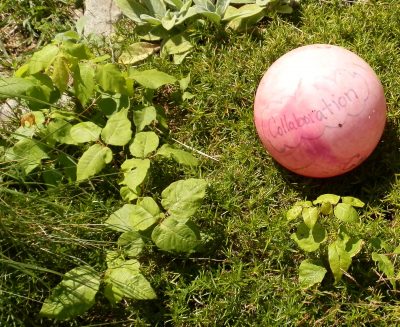
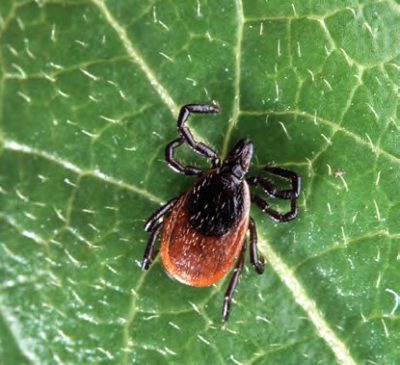
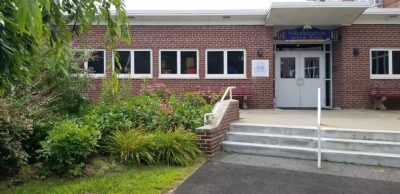
IPM protocols that should be followed as part of routine maintenance and before a repeat emergency treatment include:
- The grounds foreman or sports turf manager would assess the site and/or situation to determine the potential threat level and the best course of action required to reduce or eliminate the perceived threat;
- Mechanical means of control would be attempted as the first step (e.g., cut or hand pull poison ivy plants);
- If the problem persists, the least toxic pesticide product referenced in the IPM plan would be utilized (e.g., for poison ivy, a minimum risk, 25(b) exempt product);
- If the problem cannot be eradicated and poses an immediate threat to human health, an emergency application of an EPA registered pesticide could be authorized by the school superintendent or local health director after making the determination that emergency treatment is warranted.
- If an emergency application is found to be necessary, notification of the application must be made on or before the day that the application is made to any person who has requested to receive prior notice of pesticide applications.
Exemption information for the following pests:
- Ticks: IPM measures, such as habitat modification (e.g., trimming of tall grass and brush) in areas near buildings and where children may play, curtail the tick population and greatly reduce the need for pesticides.
- Poison Ivy (pictured, right): Before controlling this weed with herbicides, the site should be evaluated to determine if children actually frequent the area where poison ivy has been observed. If the infestation requires chemical control, it should be applied as a spot treatment (i.e., spray only the plants deemed to be a hazard or cut plants and treat stumps).
- Mosquitoes: Adult mosquitoes may only be controlled with lawn care pesticides if population monitoring has shown that there is an infectious agent of human disease (e.g. West Nile virus) being carried in the population. Control of the adult mosquito is needed to prevent an outbreak of such disease. Cultural practices to remove standing water in which mosquito larvae develop will also reduce mosquito populations. Mosquito populations can be dramatically reduced by treating larvae with Bacillus thuringiensis (Bt) products, which is a product allowed for use on school grounds.
- Stinging insects (e.g., wasps): Can usually be controlled with over-the-counter aerosol pesticides. These are not “lawn care pesticides.” They do not require a health director or superintendent determination of a public health threat, unless treatment must be made during school hours or planned activities.
How Does a School Apply for An Emergency Application?
Under the law, a public school can seek permission for an emergency application from their school superintendent. Private schools can request an emergency determination from the local health director in the case of emergencies that pose an immediate threat to human health. School superintendents and local health directors are encouraged to refer to DEEP’s emergency guidance document, which can be found online at portal.ct.gov/deep.
It is advised that all requests for emergency application are submitted in writing via email, although verbal communication is permitted. Written communication would document and help protect the facility in the event that there are questions about the procedures employed. Information that should be identified in the emergency request includes:
- Accurate identification of the pest.
- Pesticide to be used.
- Timing of the scheduled pesticide application.
- Duration of time required before the area may be re-entered by students and school staff
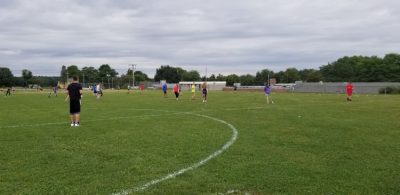
How Must a School Notify the School Community, Including Parents, Of Pesticide Applications, Whether Minimum Risk or Emergency?
Notification requirements and timing vary depending on whether there is a written IPM plan. Generally, the BOE must offer parents and guardians of all students enrolled in the school, as well as school staff, the opportunity to register for prior notification of pesticide applications.
At the beginning of each school year, the BOE must provide staff and parents/guardians of each school with written guidelines on how the IPM plan is to be implemented and a summary of the school’s IPM plan. Information must include the manner by which the staff, parents or guardians may register for notice of pesticide applications at the school and describe the emergency notification procedures provided for in this section.
Each school is responsible for maintaining a registry of people who wish to be notified in the event of a pesticide application. Notification requirements vary depending on whether there is an IPM plan in place or not. If there is an IPM plan, notice can be by any method. The school must inform those who have registered for notification of an application at least 24 hours prior to the application. Notification will include:
1) The name of the active ingredient of the pesticide being applied.
2) The location of the application on the school property.
3) The date of the application.
4) The name of the school administrator, or a designee, who may be contacted for further information.
Yellow posting signs must be used for all pesticide applications, including minimum risk pesticides allowed for use on school properties. They must be posted at points of entry to the property and every 150 feet of public road frontage. Notice of pesticide applications must also be posted on all social media that is in use by the school (e.g., Facebook).

How Must a School Document Each Pesticide Application and Emergency Exemption?
Schools must maintain records of all pesticide applications (including those of minimum risk products) for 5 years. Records must include:
- Name(s) & certification number(s) of the licensed commercial supervisor and operator.
- Name and amount of pesticide used, and amount of acreage treated for each application.
- Date and location of application.
- The identified pest requiring treatment.
- Site treated.
The Athletic Field Assessment Form and Landscape Assessment Form, which were developed by UConn Extension, are recommended tools for athletic field/turf and ornamental landscape management. These tools provide a helpful format to document regular maintenance practices and pest monitoring observations. This documentation can be incorporated as support material as pesticide applications are recorded, whether routine (minimum risk) or emergency (EPA registered). The forms can be found at ipm.cahnr.uconn.edu/school-ipm.
Can Homemade Pesticides Be Used on School Properties?
Never; even if the homemade pesticide is composed of minimum risk ingredients, homemade remedies cannot be used. Any pesticide used on school grounds or daycare properties must be registered with the state of CT and on the CT DEEP list of allowable pesticides, which can be found at ipm.cahnr.uconn.edu/school-ipm and portal.ct.gov/deep. The law requires that all pesticides are used according to label directions.
Can An Exempt Pesticide That Is Allowed for Use on School Properties Be Used If the Product Hasn’t Been Listed in The Approved IPM Plan?
No. Use of any pesticide product on school properties must be included as part of a comprehensive Integrated Pest Management (IPM) plan, even if it is a minimum risk product allowed for use on school properties.
How Does the Law Apply to the Maintenance of a School Property or A Fenceline That Abuts a Home Property?
It depends on who owns and maintains the fence, or the area identified with a pest concern. If the school owns the property in question, then the law and responsibility of care pertain to the school; if the homeowner owns the property, then the property is maintained by the homeowner as he or she determines.

If A School Event Is Hosted on A Designated Municipal Property, Such as A Park (Not on School Grounds), Must It Be Managed with the Same Product Restrictions Under This Law?
No. Municipal properties do not fall under the same guidelines, although municipalities are encouraged to implement IPM programs for all of their properties. Pesticide applications on municipal playgrounds (a playground owned by the municipality that is not on a school ground) must be performed by licensed applicators, with the exception of an emergency application to eliminate an immediate threat to human health.
Notice of a pesticide application must be posted on the municipal website at least twenty-four hours prior to the application being made unless it is an emergency application, in which case, notice is required to be posted as soon as is practicable.
There is no requirement for a town to have or develop a policy statement or written IPM plan for municipal playgrounds. Decisions regarding applications of any pesticides on a municipal playground is assigned to the “controlling authority,” which is the Head of the Department that is responsible for maintenance of the playground, or their designee, and specifically NOT responsible for the maintenance of schools. Although “athletic field” is defined in the law, there are no requirements specific to athletic fields.
If a Product is Available at a Local Garden Center or Hardware Store for Homeowner Purchase, Does That Mean It Can Be Used by School Staff on School Properties?
Not necessarily. Even if a product is available for purchase from a local garden center or hardware store, it cannot necessarily be applied on school property.
- No lawn care pesticide product with an EPA registration number can be applied on school properties, even if it is sold at a local store and available as a ready-to-use (RTU) product with no mixing involved.
- On school properties, any minimum risk product that is referenced on the DEEP approved list for use on school grounds, and included in the IPM plan, must be applied by a licensed applicator. Note: homeowners could apply the same product on their own property without a license.
- Any person applying a pesticide without first obtaining certification or applying an unregistered pesticide to the school property is in violation of the law. The applicator, company, and/or the Board of Education may be subject to a fine.
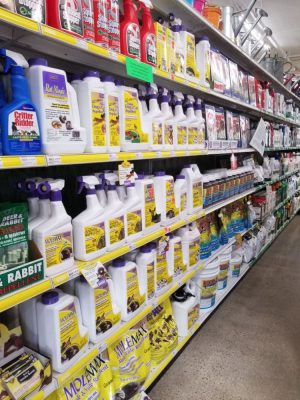
How Does the CT Pesticide Ban Affect an Organic Land Care Program?
Organic land care is an alternative turfgrass management program that minimizes or eliminates the use of synthetic pesticides, synthetic fertilizers, and synthetic soil amendments. Like the universally accepted IPM program, this approach also integrates cultural, biological, and mechanical practices, promotes an ecological balance, and encourages biodiversity.
The Organic Materials Review Institute (OMRI) maintains a list of organic pesticide products used for food production, which also may be considered in organic land care. However, many of these products are required to have an EPA registration number because they do not meet EPA's criteria for minimum risk pesticides. Therefore, they are prohibited from use at daycare and K-8 schools.
Can Playing Fields, Grounds, And Lawns Be Managed Without the Use of Pesticides?
Yes, they can be, although the threshold level for pests may vary based on intensity of use and priority level of the field.
- Use the Athletic Field Assessment Form or Landscape Assessment Form, developed by UConn, in partnership with DEEP, as tools for monitoring athletic field and landscape management. They are useful for documenting regular turf and landscape maintenance, providing a record-keeping format for ongoing pest monitoring and pesticide applications, whether routine (minimum risk) or emergency (EPA registered). The forms can be found at cahnr.uconn.edu/school-ipm.
- Review the site history and recognize potential pest problems. Record and make observations of the site on the Assessment Form or other document. Generate plans to manage turf or landscaped areas accordingly.
- Make a plan to optimize cultural management of all fields and lawns, and communicate this plan to administrators, staff and stakeholders. Be sure to involve all persons that are potentially impacted by the turf or landscape care program (i.e., school staff, coaches, players, teachers, parents, school board, and other interested community members).
- Encourage thoughtful discussion and consideration before a crisis arises. Decide which problems would constitute an “emergency” and present them (in advance of the problem arising) to the appropriate authority. Proactive communication about athletic field and landscape care may reveal other potential concerns. Dialogue about field usage and field care practices may support better preparation for a potential request for an emergency application, if the need arises.
- Regularly train staff and amend standard practices with up-to-date technologies.
- If possible, share equipment with neighboring towns to make it possible to regularly update the fleet or modernize equipment to aid in turf management.
- Attend UConn Extension educational trainings: School IPM Workshops, Turf Field Days, Municipal and School Grounds Turf Academy are offered annually or biannually.
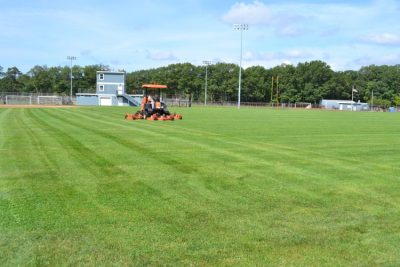
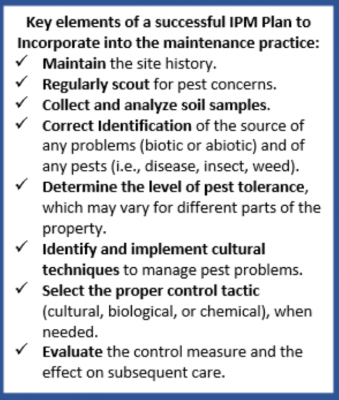
Properly maintained turfgrass should produce dense and healthy playing surfaces and recreational lawn areas. Some weed growth should be anticipated and tolerated.
Best management practices that produce a dense, healthy playing surface include:
- Select turfgrass species that are best suited to the needs of the existing site and the intended use of the area. When possible, use certified seed, or seed with the greatest germination and purity and a low percentage of weeds.
- Use improved turfgrass varieties that have better turf quality, enhanced wear and drought tolerance, and increased pest tolerance.
- High traffic areas and athletic fields: Overseed regularly with perennial ryegrass during the season. Look for varieties that tolerate wear and are resistant to gray leaf spot. For fields that are rested during renovation (for a minimum of 14 weeks), improved cultivars of turf-type tall fescue can also be considered (Shelley et al. 2011). If fields cannot be taken out of use during renovation, perennial ryegrass is the preferred turfgrass to establish. Turf-type tall fescue cultivars are very tolerant of wear and drought. Tall fescues have a deeper and more extensive root system than other cool-season turfgrasses, therefore, once
- established, often perform well in non-irrigated, multi-use areas.
- Amenity areas (non-athletic field or non-wear prone locations) can be seeded with a high percentage of fine fescues, which, when established, perform well with few inputs and blend well with other cool-season turfgrass species.
- Consistent overseeding is the primary mechanism used to reduce turfgrass weeds on pesticide-free fields. Overseeding at high rates, particularly in the fall, where irrigation is limited, is recommended.
- Build and maintain healthy soil with amendments as needed, using soil tests as the basis for decisions. Necessary nutrients may be delivered via organic or synthetic fertilizer. Apply fertilizer based on soil test analysis to optimize turfgrass growth, rather than as a habitual seasonal task. Turfgrasses should be fertilized when actively growing to encourage recovery from wear, especially in high traffic areas. Consistent feeding aids in recuperation.
- At a minimum, fertilize non-athletic field turfgrass areas at least once a year (early fall) using up to 1.0 lbs. nitrogen per 1,000 ft2. If a second application is desired, a spring application is optional.
- Fertility on athletic field and recreational turfgrass areas should be applied as needed as the level of field use increases. Use of a slow-release fertilizer is recommended for extended nutrient release.
- Mow non-athletic field turf areas as high as possible for the turf species and intended use of the area. Keep mower blades sharp all season long.
- Wherever possible, irrigate athletic fields and other turf areas during the growing season to maintain a dense, healthy playing surface. If irrigation is not possible, expectations for successful seed establishment must be reduced and the threshold for weed tolerance must be dramatically increased. During the growing season, irrigate based on need, rather than timed, scheduled events. Where possible, incorporate the most current sensors to dictate irrigation needs and periodically check and calibrate irrigation systems to assure even coverage.
- Regularly cultivate the soil to relieve compaction and allow air, water, and nutrients to enter the soil, as well as encourage turfgrass root development. Highly trafficked areas require more frequent cultivation than less frequently used turf areas.
- Scout for pests on a regular basis and as part of the normal maintenance routine.
- See Best Management Practices for Pesticide-Free, Cool-Season Athletic Fields for more detailed information (cahnr.uconn.edu/school-ipm).
Best management practices for chemical-free weed control strategies in landscape areas include:
- Right plant, right place:
- Whenever possible, use and incorporate native or non-invasive plants that are adapted to the existing site conditions. They are often more persistent in harsh, sunny environments.
- Consider the soil characteristics, climate, sun exposure, water conditions, and pest possibilities when selecting plants.
- Use plants that will perform well over time. Ensure that the mature height and spread of each plant is considered to avoid the need for excessive pruning or regular replacement.
- Group plants with similar watering, pH, and fertilizer requirements together to allow for the most efficient use of resources.
- Select plants with minimal care requirements (pruning, fertilizing, etc.).
- Be realistic: Considering the pesticide ban and budget constraints, many schools are reducing the size and scope of their landscaped areas. Rather than maintaining a large expanse of foundation plants, a reduction around plantings that require weeding and mulching may be pragmatic. Maintain ornamental plantings in high-visibility areas at school entrances and utilize turf along the side of buildings and in less visible areas of the landscape.
- Scout: Continuallyscout for pests (weeds, insects, and disease) during routine outdoor maintenance. Eradicate newly emerging weeds before they become extensive problems.
- Document: Use the UConn Extension Landscape Assessment Form (ipm.cahnr.uconn.edu/school-ipm) as a tool to regularly evaluate the health of the school’s landscape.
Mulch: Adding a weed barrier in landscape beds, along fence lines, and underneath playground areas. Use of cardboard, newspaper, or landscape fabric, covered with 4-6” of untreated bark mulch, will prevent or reduce
- the establishment of unwanted plants. Refresh the mulch with an additional light layer of mulch every year to minimize weed development. In landscape settings, it is important not to place mulch too close to the base of tree trunks, which will suffocate the roots.
- Thermal weeding: Intense heat, using a propane weed torch or a steam weeding device, delivered to the intended weed, may injure or kill young/juvenile plants. It is most effective when used in the spring and early summer, when weeds are small.
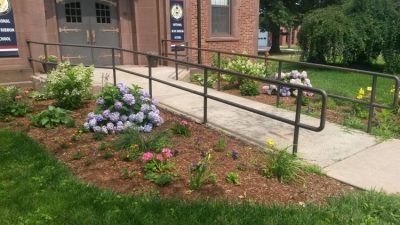
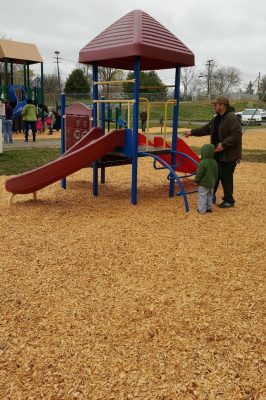
Where Can Grounds Managers Find Help with Managing Grounds Without the Use of Pesticides?
UConn’s School IPM website provides a wealth of information for school grounds managers on how to maintain school grounds without the use of pesticides (ipm.cahnr.uconn.edu/school-ipm):
- Best Management Practices for Pesticide-Free, Cool-Season Athletic Fields
- Identification of Problem Weeds in School Turf Areas
- Identification of Problem Weeds in School Landscapes
- Meadows: An Alternative Management Strategy for School Landscapes
- Minimum Risk Products Permitted for Use at Schools (CT DEEP list)
- Minimum Risk Products Being Evaluated in UConn Extension Study
- Strategies to Minimize Deer Damage on School Grounds
- Mole Management in CT School Landscapes
- Text of the law (C.G.S. Sec. 10-231).
Other Helpful Links:
- CT Department of Energy and Environmental Protection: ct.gov/deep
- EPA Exempt Pesticides: epa.gov/minimum-risk-pesticides
- CT Invasive Plant Working Group: cipwg.uconn.edu
- Sports Field Managers Association: sportsfieldmanagement.org
- New England Sports Field Managers Association: nestma.org
- Cornell University’s Ticks Information: cornell.edu
- CT Agricultural Experiment Station (CAES) Tick Management Handbook: ct.gov/caes/tick-office
References:
Shelley, M., A. McNitt, and T. Serensits. 2011. Effects of establishment practices and cultivar selection on the traffic tolerance of turf-type tall fescue. Int. Ann. Meet. p. 65112.
Glossary:
Abiotic: Not associated with or derived from living organisms. Abiotic factors in an environment include sunlight, temperature, wind patterns, and precipitation.
Biochemical pesticide: a pesticide that is a naturally occurring substance that controls pests by nontoxic mechanisms.
Biotic: relating to living organisms; as a factor in an ecosystem, produced by the action of living organisms.
Lawn care pesticide: defined in the law as any pesticide that is labeled for use on lawns, gardens or ornamental sites and areas (including trees).
Microbial pesticide: a pesticide that consists of a living microorganism as the active ingredient.
For any questions about products that are allowed for use on school properties or anything else related to Connecticut’s School Grounds Pesticide Law, contact:
CT DEEP Pesticide Management Program
(860) 424-3369

Funds to support the creation of this document were provided by the Connecticut Department of Energy and Environmental Protection and by the Crop Protection and Pest Management Extension Implementation Program [grant no. 2017-70006-27201/project accession no. 1013777] from the USDA National Institute of Food and Agriculture.
For more information, contact:
Vickie Wallace
UConn Extension
Extension Educator
Sustainable Turf and Landscape
Phone: (860) 885-2826
Email: victoria.wallace@uconn.edu
Updated April 2019